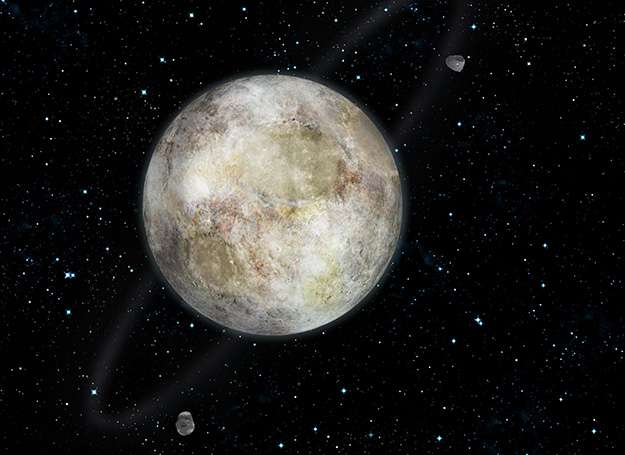Pluto sweats, and 5 other things you didn't know about the dwarf planet

After nine years and six billion kilometres, the New Horizons space probe will fly past Pluto July 14.
The probe, moving at a speed of 50,000 km/h, will provide astronomers with loads of information and the first clear photos of the dwarf planet, and will come within 12,500 km of its surface.
Needless to say, astronomers – including McMaster's Rob Cockcroft – are very excited.
"We will never have another opportunity to freshly explore an object that was once considered a planet – not until we figure out how to get to extrasolar planets, anyway," he says. "The data New Horizons gathers won't just help us understand how Pluto was formed, but how the Solar System itself was formed."
Clearly there's lots we don't know about Pluto – so what do we know? Cockcroft provides a Pluto primer below.
- Day length: Pluto takes much longer to complete a full rotation than Earth does, making a day there equal to nearly six and half Earth days. A Pluto year is about 248 Earth years.
- Composition: Basically, Pluto is a huge chunk of rock covered in a relatively thin layer of ice, with nitrogen ice on the surface - and very possibly, water ice between that and the rock.
- Atmosphere: Pluto doesn't have an atmosphere like ours. It's about 100,000 times less dense than ours, because the planet is "sweating". It's mostly nitrogen, with traces of methane and carbon dioxide, that sublimate – or move from solids directly to gases – off the surface to produce this thin "atmosphere".
- Distance: On average, Pluto is about 40 times further from the Sun than the Earth (it varies between 39 times and 50 times because its orbit is elliptical). That's between 4.4 and 7.4B km from the Sun.
- Seasons: Pluto's seasons are extreme and long. Earth's seasons are caused by its tilt (23.5 degrees). To give you some perspective, Pluto's tilt is 120 degrees!
- Orbit: Pluto and its largest moon, Charon, orbit in such a way that the same moon face is always seen from Pluto's surface – just like Earth and its Moon. But Charon is also always in the same spot in Pluto's sky, meaning that if you're on the wrong side of Pluto, you'd never see the moon.
Provided by McMaster University





















